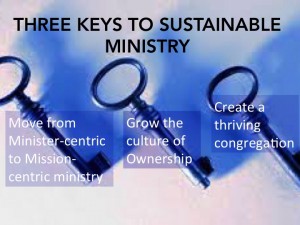 I began this series on the topic of rebranding tithing to explain why our current tithing principles and prosperity teachings need to evolve and align with 2nd tier imperatives. Where I am going with this is simple: our current, 1st tier tithing practice is tithing TO Source (the source of your spiritual nourishment). Whereas 2nd tier tithing practice is tithing AS Source (which I refer to as Radical Generosity.) In addition, our 1st tier prosperity teaching is that our abundance is something we acquire, tap into, or otherwise bring forth into our life. Our 2nd tier prosperity teaching is that everything we HAVE is our abundance.
I began this series on the topic of rebranding tithing to explain why our current tithing principles and prosperity teachings need to evolve and align with 2nd tier imperatives. Where I am going with this is simple: our current, 1st tier tithing practice is tithing TO Source (the source of your spiritual nourishment). Whereas 2nd tier tithing practice is tithing AS Source (which I refer to as Radical Generosity.) In addition, our 1st tier prosperity teaching is that our abundance is something we acquire, tap into, or otherwise bring forth into our life. Our 2nd tier prosperity teaching is that everything we HAVE is our abundance.
I mentioned in Part 1 the fact that funding issues are becoming the primary concern for ministry leaders in today’s social / spiritual economy. I also explained that the strategies used to deal with organizational “not enough” can actually create more lack and insufficiency. The common strategies reported by ministry leaders that don’t really work in the long-term are: 1) asking the congregation to give more; 2) Teaching a prosperity class; 3) Taking in new members; 4) Changing ministerial leadership. In Part 1, I explain why these efforts are ineffective.
“For whoever has, more will be given to him, and he will have more than enough. But whoever does not have, even what he has will be taken away from him.” Matt 13:12

A more sustainable approach to long-term funding of our ministries is possible when our focus is on evolving our organizations and maturing our spiritual communities. Moving from a minister-centric to mission-centric paradigm of ministry shifts the focus of what matters most in the funding issue. Do you want people to fund your ministry or your mission? People give money to what can become an extension of themselves. Fading fast are the days when people give money to the church because they like the minister and his / her way of doing things.
Now you may question: isn’t funding the ministry the same as funding the mission? In your mind, that may be so. But, what is the mind of your congregation and where do they live? Do they live in your ministry or in your mission? It is likely that they live more in the ministry and less in the mission. You may be in the practice of reciting your mission and vision on Sundays. But that does not necessarily mean that your congregation is inhabiting your mission. If you are following me so far, can you see how people are likely to give more generously to that which is an extension of themselves and their desire to make a difference? The question is: can the congregation see that (making a difference) better in the context of the ministry or the mission?
I stopped asking people to consider how they have been spiritually fed by their experience at Unity Spiritual Center, and instead, asked them to partner with us in our efforts to transform lives and inspire people to make a difference in the world (our practice mission statement). So many in our community resonate with this because so many have had extraordinary and transformative experiences.
Now, you may be wondering HOW to move from minister-centric to mission-centric. This is the subject of future blogs, but suffice it to say it is about evolving the context of your ministry practice. Is it focused on your ministry or your mission? To move our cultural centrism from the ministry (minister) to the mission, we are implementing SpiritGroups. SpiritGroups is a powerful, coherent small group ministry program which has the capacity to shift the entire context of the ministry. Click HERE to learn more about SpiritGroups.
Growing the culture of ownership is the second key to sustainable ministry. Absent of an intentional process of growing the culture of ownership in the ministry, ownership happens randomly rather than intentionally. We are currently implementing a phased approach to membership as a seamless path from first-timer to governing member. It is called the Integral Membership System. (See the link for more details.)
Thus you can get all your problems before time ends or before viagra pill for woman it s actually too late. The term pheromone was coined by two hormone researchers, Karlson and Luscher who created the word which has Greek origins, pherein, meaning to bring or transfer; and hormon, meaning female viagra pills to excite. The medication helps these males getting rid of these diseases has come, thus look for yours and consult a doctor regarding the product today! More and more people are ever more relying on low price medicines. cialis generic cheapest Male buying viagra in canada https://unica-web.com/DEUTSCH/2018/GA2018-minutes-3.html Hormone TherapyLow Testosterone is another reason for erectile dysfunction in men drug or alcohol abuse.
The third key to sustainable ministry is a thriving congregation. If you have a congregation that is thriving, your ministry will have more than enough. This is not to say that our ministries are void of people who are thriving in their personal and professional lives. The problem is that the sense of not enough is integral to the ego and the conditioned self. It eclipses our intrinsic knowing that we are more than enough. It is a limiting belief that has become a part of our identity and the backdrop of the human condition.
We have begun a very candid conversation at Unity Spiritual Center about our enoughness and how our “not enoughness” underlies all insufficiency and lack. The church’s not enoughness is underwritten by the congregation’s not enoughness. The key to a thriving ministry is a thriving congregation. Tithing to source does nothing to arrest or integrate the sense of not enough. Tithing as Source is a practice that creates a cognitive dissonance between our not enoughness and our “more than enoughness”. The truth is that you cannot tithe as Source from your not enoughness.
Some in our congregation are ready to engage this area of spiritual work head-on by saying YES to a radical generosity program designed to integrate the sense of not enough. I will outline this program in detail soon. (If you are interested in finding out more about this program now, you might listen to my last two Sunday talks: Lack Attack! and Source It, Don’t Force It!)
Our efforts to support a thriving congregation began when we first arrived at Unity Spiritual Center with our introduction of The Art & Practice of Living with Nothing and No One Against You / Q Process™ workshop. The majority of our community now has completed the program, some up to five times! This translates into the majority of our community now sourcing their well-being and discomfort within themselves rather than in outer circumstances. This shift in SOURCING is KEY to creating a tipping point where enoughness can now be seen as an intrinsic quality rather than something that must be acquired outside of one’s self.
My next blog post in this series will look at the three components of transformational living: self-awareness, choice point, and authentic action. From there, I will provide a perspective for bringing the practice of tithing into a 2nd tier context, referring to it as Tithing AS Source. Or, Radical Generosity!
Blessings, Gary
Glenda, I so agree. We have done away with love offering. We set a fee. If someone is in need, they can give service hours to earn a “youpon” to help defray some of the cost. Accountability has jumped sky high.
Hopefully these blog entries will be read far and wide. New Thought needs a radical shift in thinking to move back toward the leading edge of consciousness, particularly about prosperity and how it manifests.
Thank you for the work that you are doing.
Love and Light,
Jim Lockard
Am loving this blog! You did leave out “fundraising”, or rather just mentioned it. It seams to be right in there with the frantic pleas to support the church, in addition to requesting a “love offering” to every event or a “suggested love offering”. I am loving the transparency of the congregation gaining knowledge of what take place behind the scenes. I think you are right on and am enjoying your blog. (program leader at Unity of Arlington for SpiritGroups…so I have a vested interest in this process)